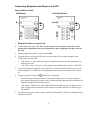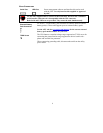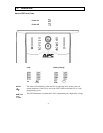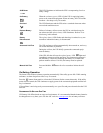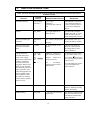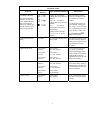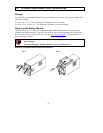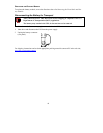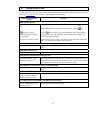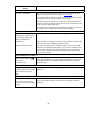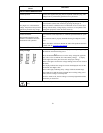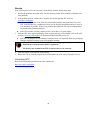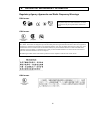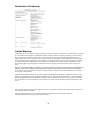
12
PROBLEM AND POSSIBLE
CAUSE
S
OLUTION
THE OVERLOAD LED IS LIT AND THE UPS EMITS A SUSTAINED ALARM TONE
The UPS is overloaded. The connected equipment exceeds the specified “maximum load” as de-
fined in Specifications at the APC web site, www.apc.com.
The alarm remains on until the overload is removed. Disconnect nonessen-
tial equipment from the UPS to eliminate the overload.
The UPS continues to supply power as long as it is online and the circuit
breaker does not trip; the UPS will not provide power from batteries in the
event of a utility voltage interruption.
If a continuous overload occurs while the UPS is on battery, the unit turns
off output in order to protect the UPS from possible damage.
THE REPLACE BATTERY LED IS LIT
Replace Battery LED flashes
and short beep is emitted every
two seconds to indicate the
battery is disconnected.
Check that the battery connectors are fully engaged.
Weak battery. Allow the battery to recharge for 24 hours. Then, perform a self-test. If the
problem persists after recharging, replace the battery.
Failure of a battery self-test. The UPS emits short beeps for one minute and the replace battery LED
illuminates. The UPS repeats the alarm every five hours. Perform the self-
test procedure after the battery has charged for 24 hours to confirm the
replace battery condition. The alarm stops and the LED clears if the bat-
tery passes the self-test.
THE SITE WIRING FAULT LED IS LIT
The site wiring LED is lit
(rear panel).
120V models only.
The UPS is plugged into an improperly wired utility power outlet. Wiring
faults detected include missing ground, hot-neutral polarity reversal, and
overloaded neutral circuit. Contact a qualified electrician to correct the
building wiring.
THE INPUT CIRCUIT BREAKER TRIPS
The plunger on the circuit
breaker (located above the input
cable connection) pops out.
Reduce the load on the UPS by unplugging equipment and press the
plunger in.
AVR BOOST OR AVR TRIM LEDS LIGHT
AVR Boost or Trim LEDs light
Your system is experiencing
excessive periods of low r high
voltage.
Have qualified service personnel check your facility for electrical prob-
lems. If the problem continues, contact the utility company for further
assistance.




